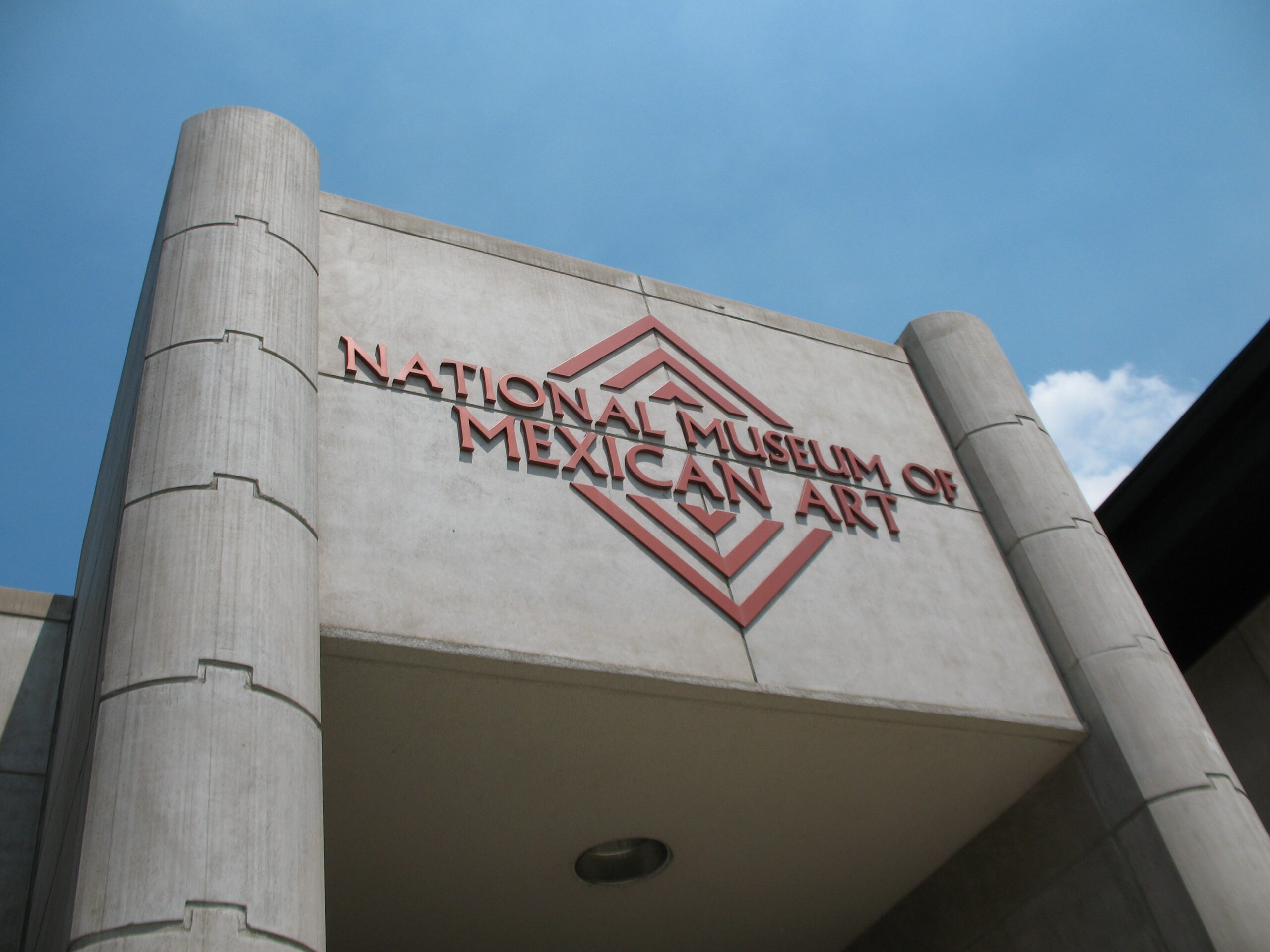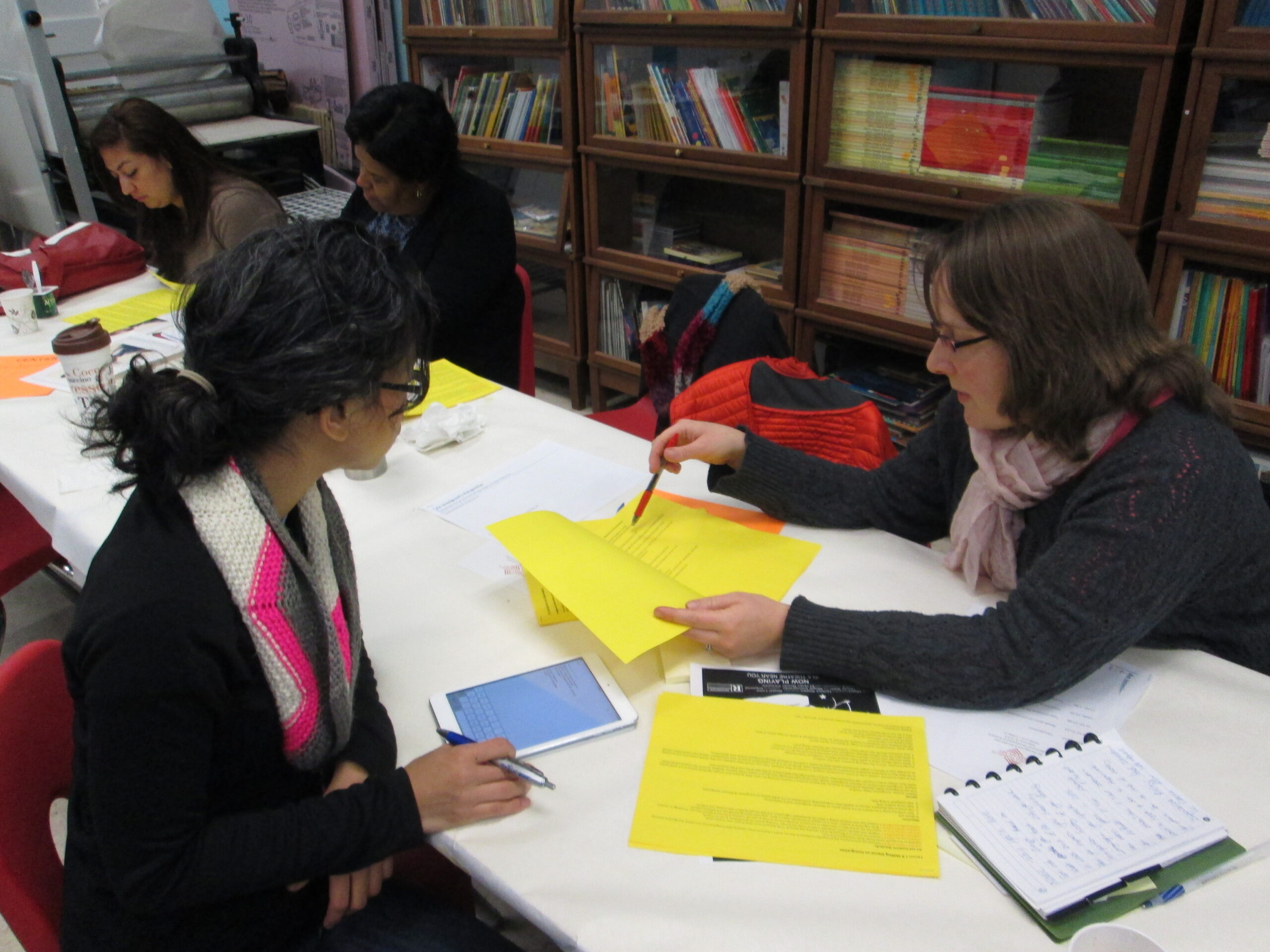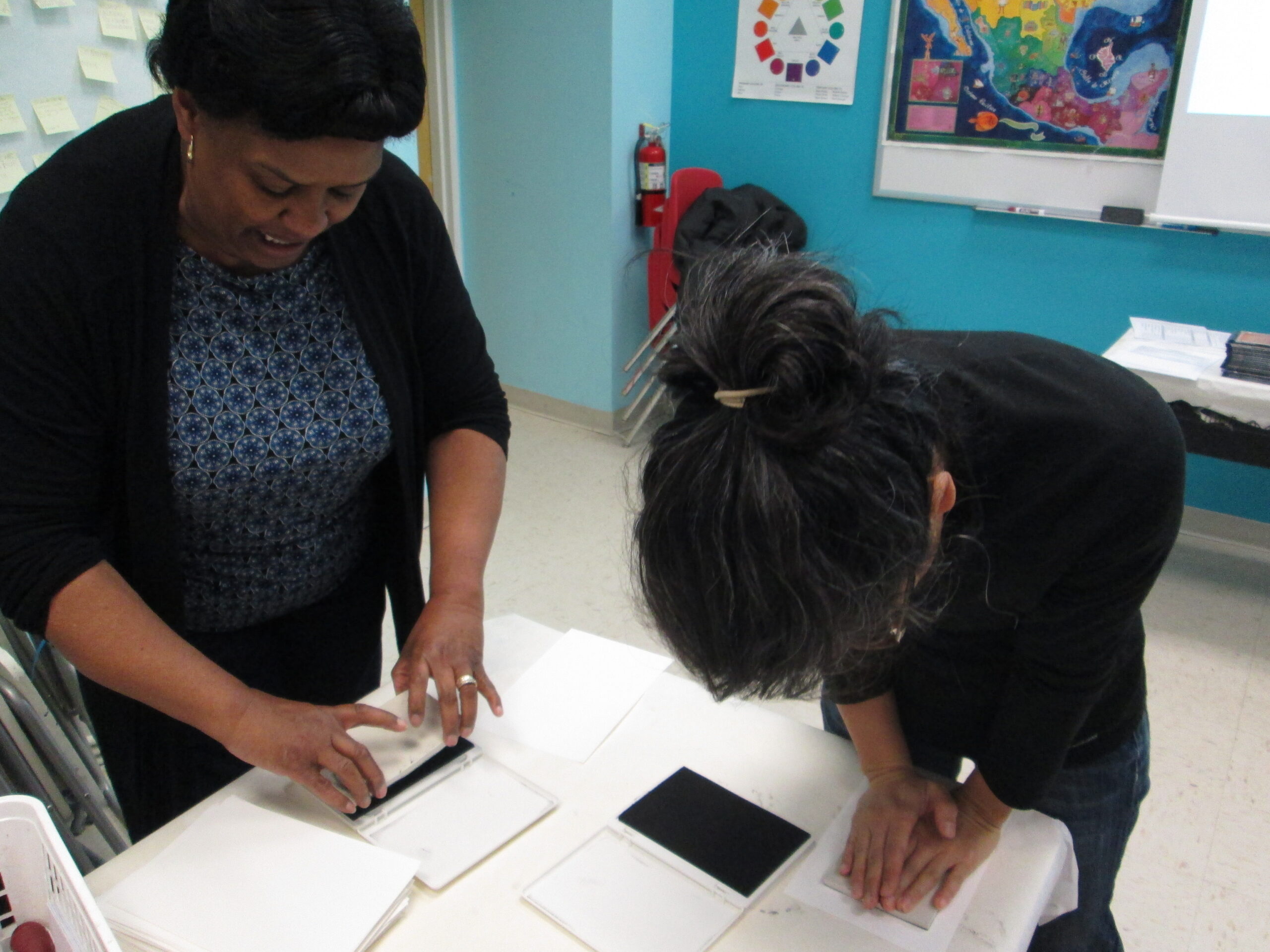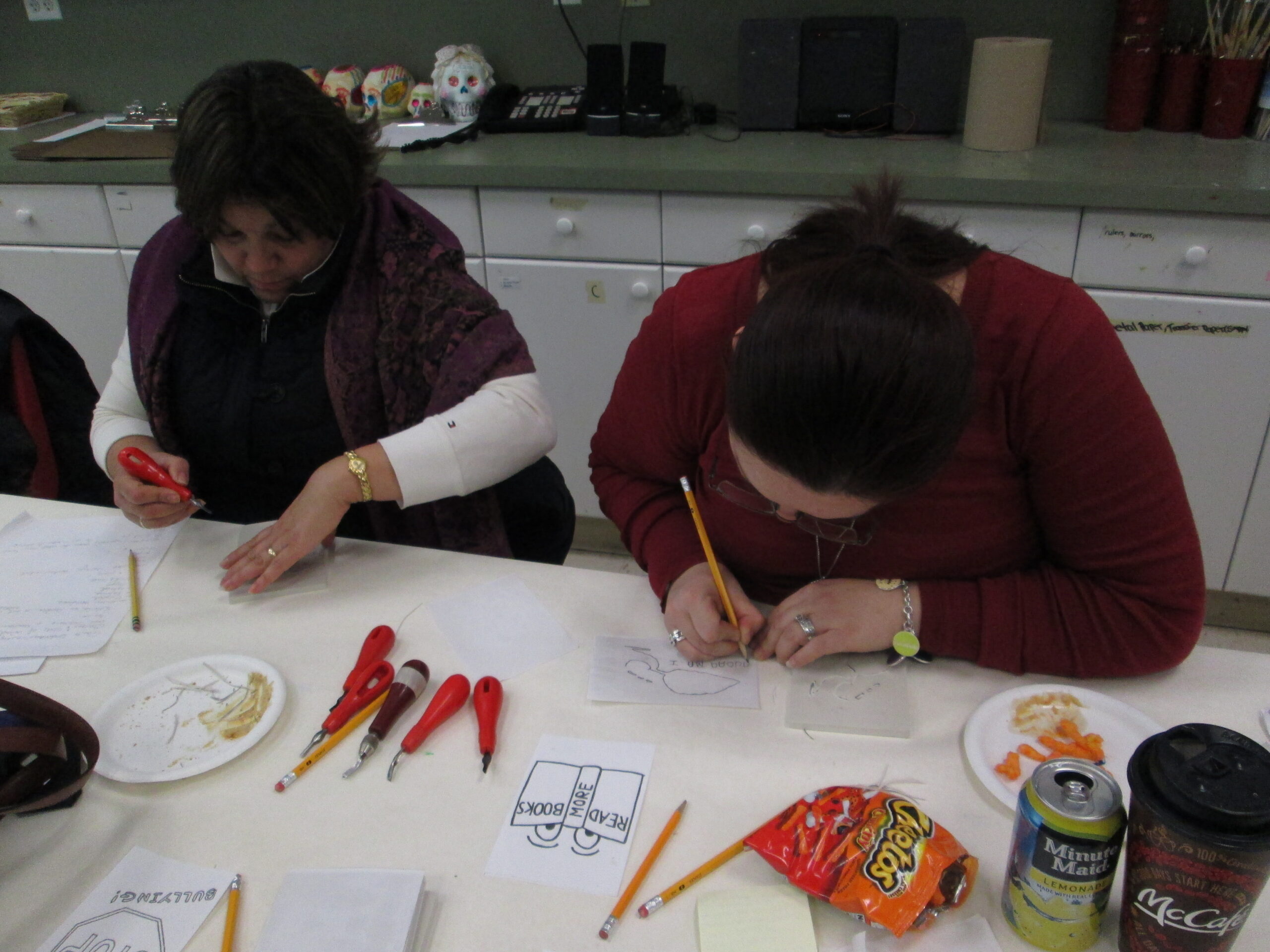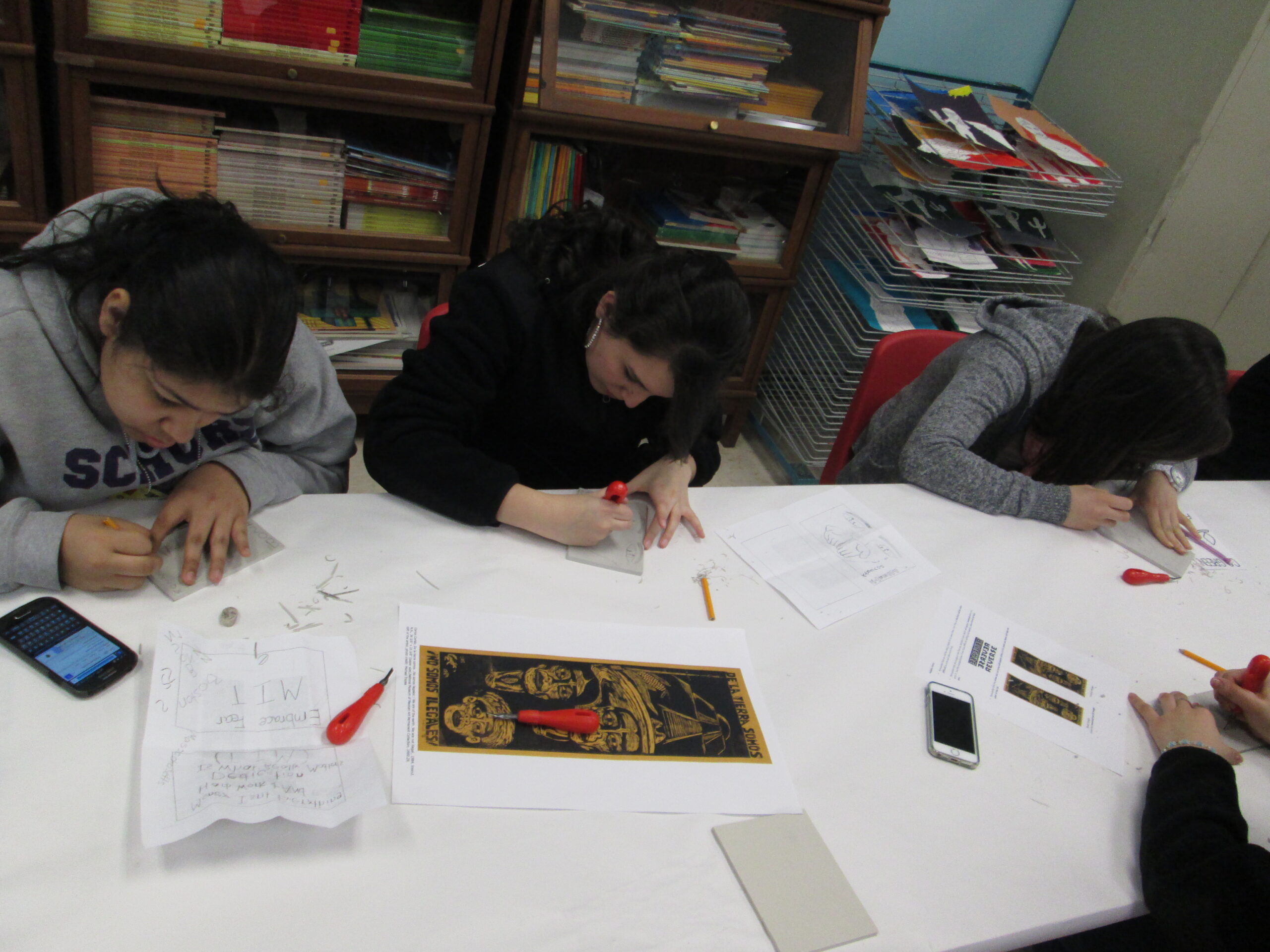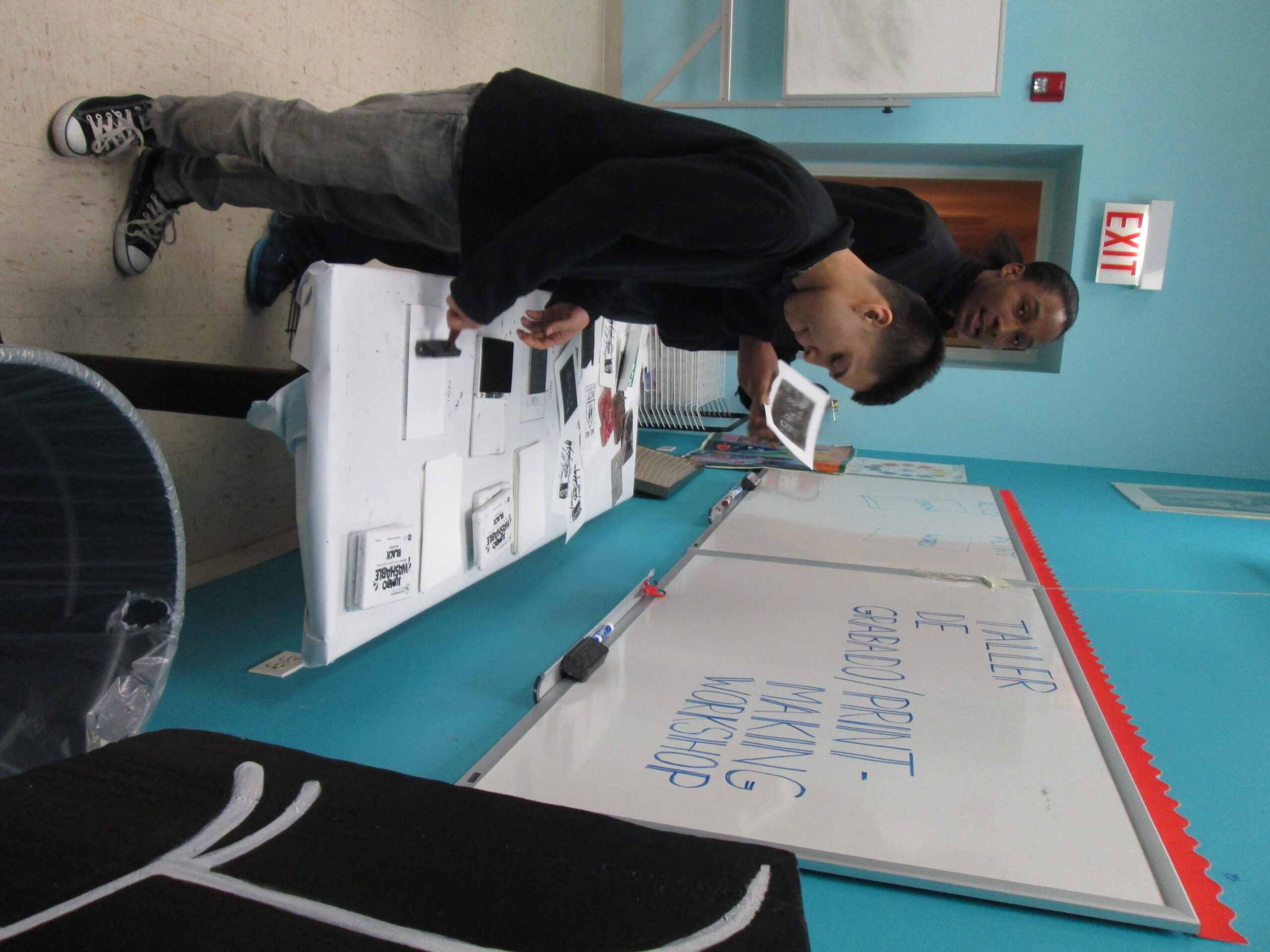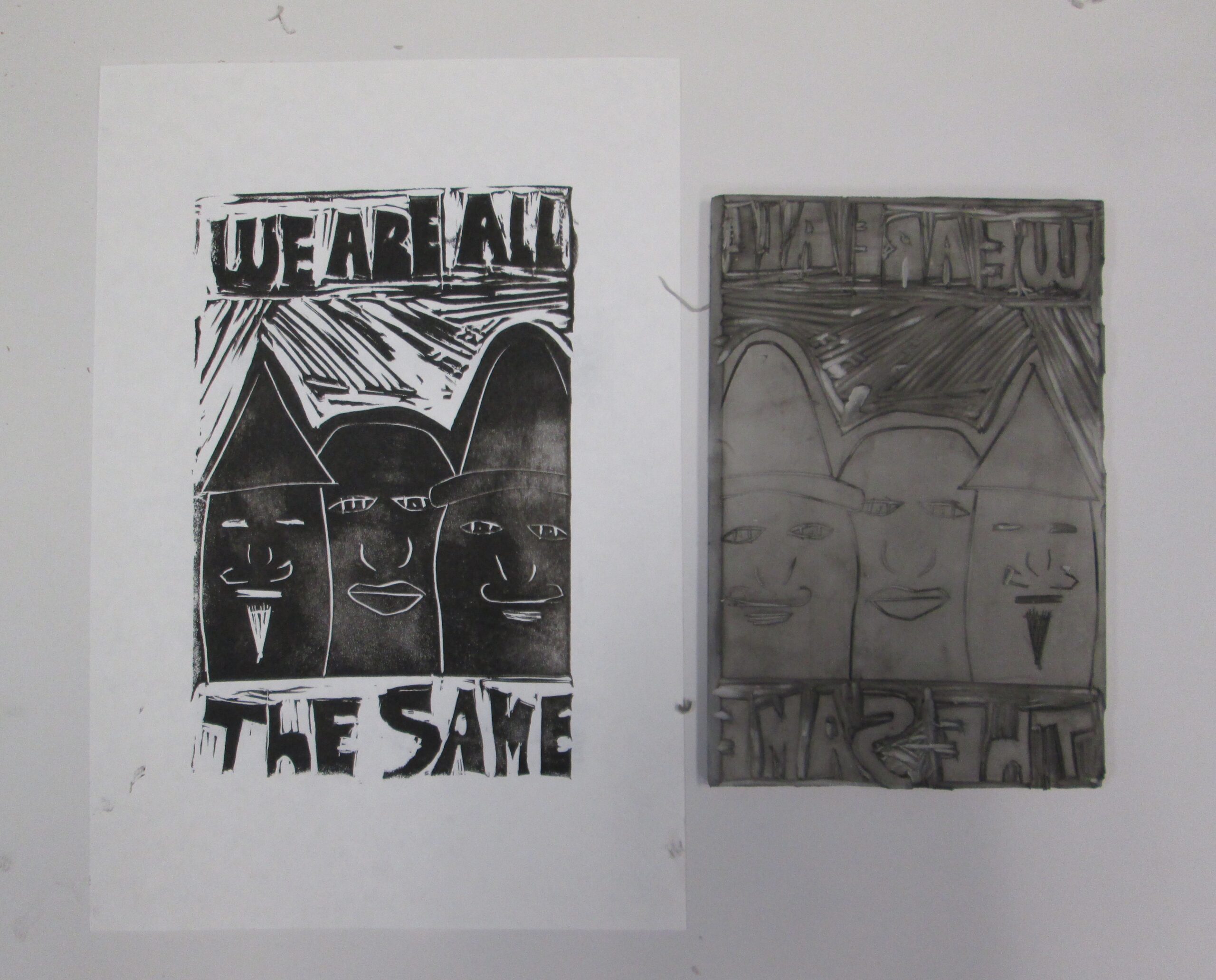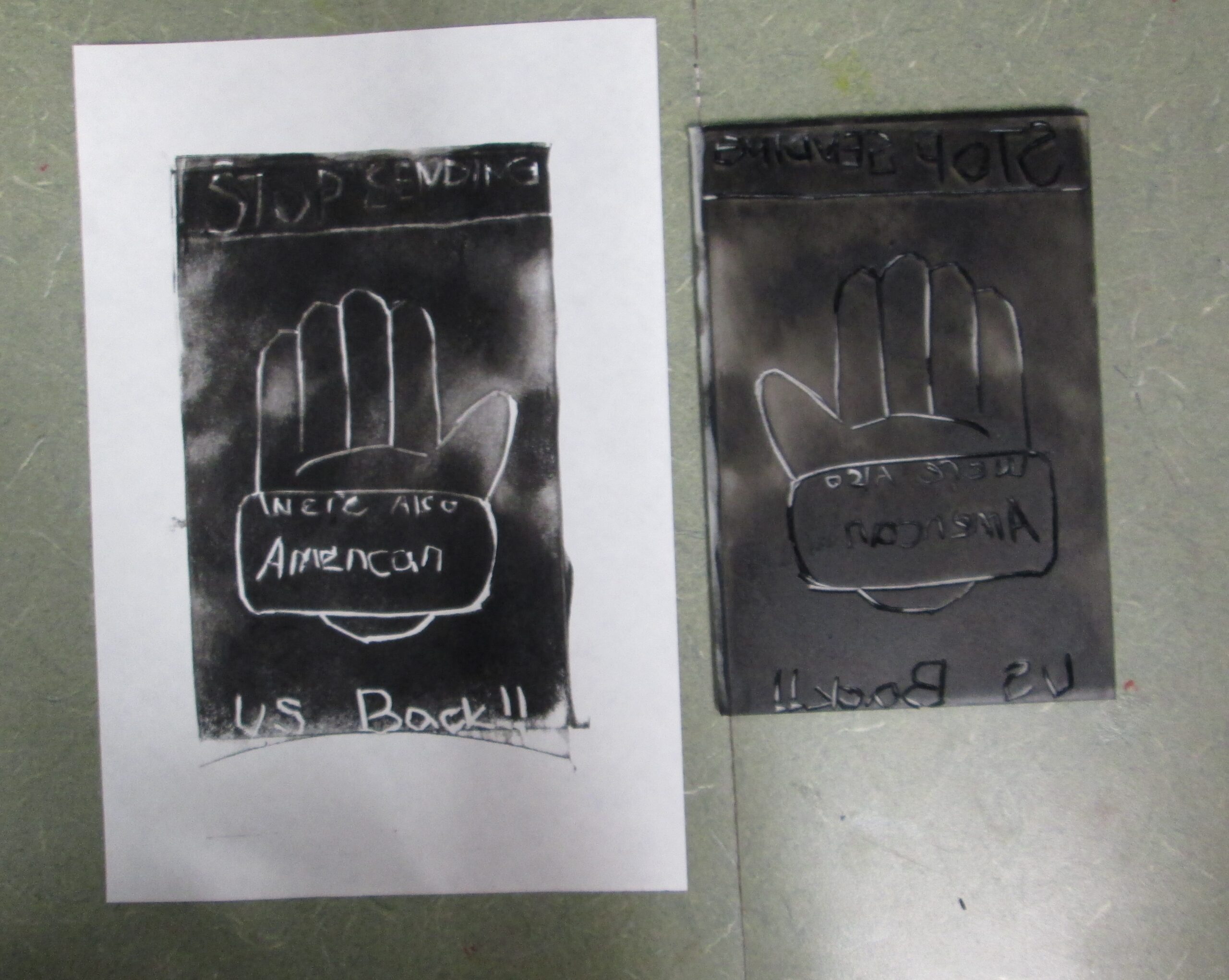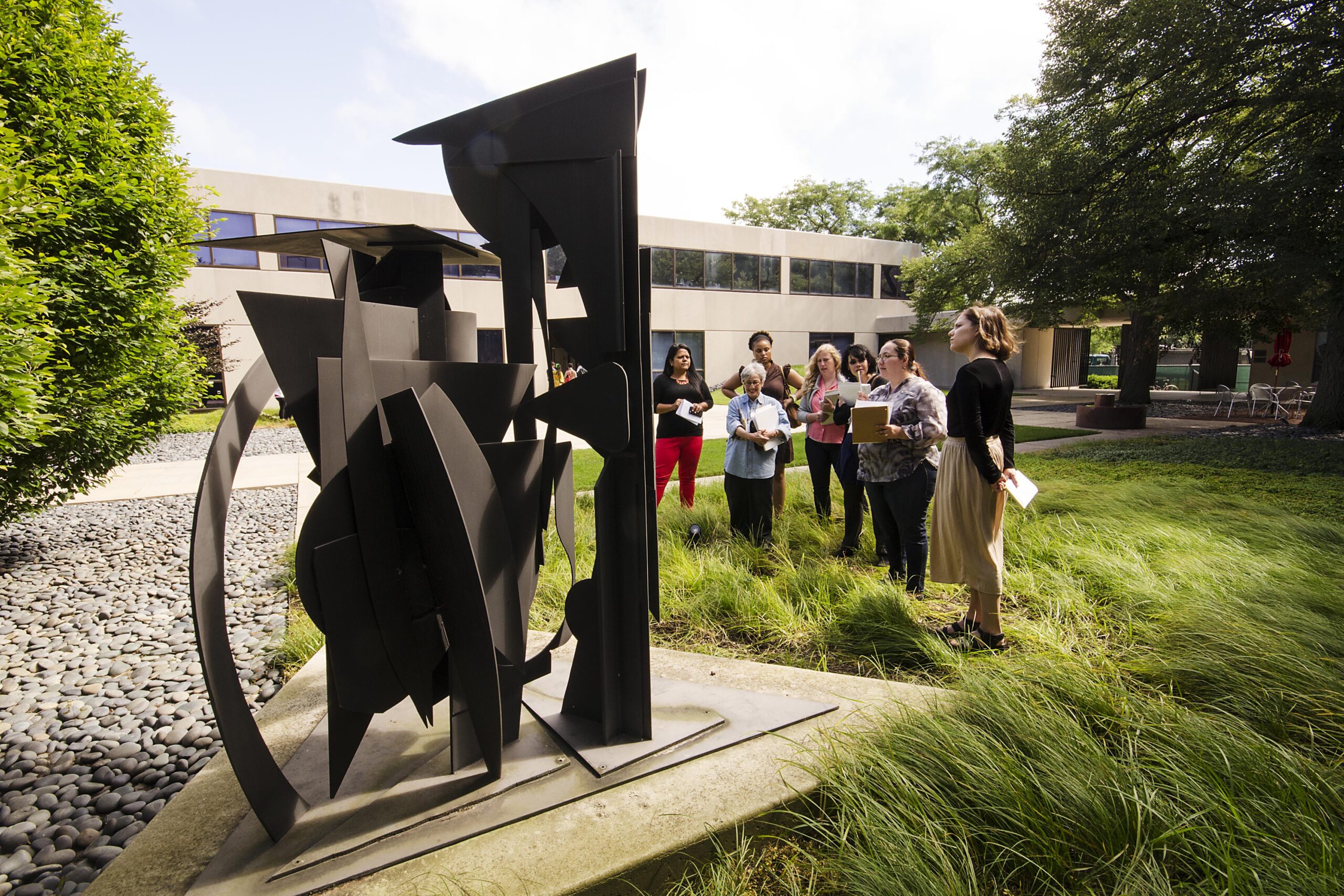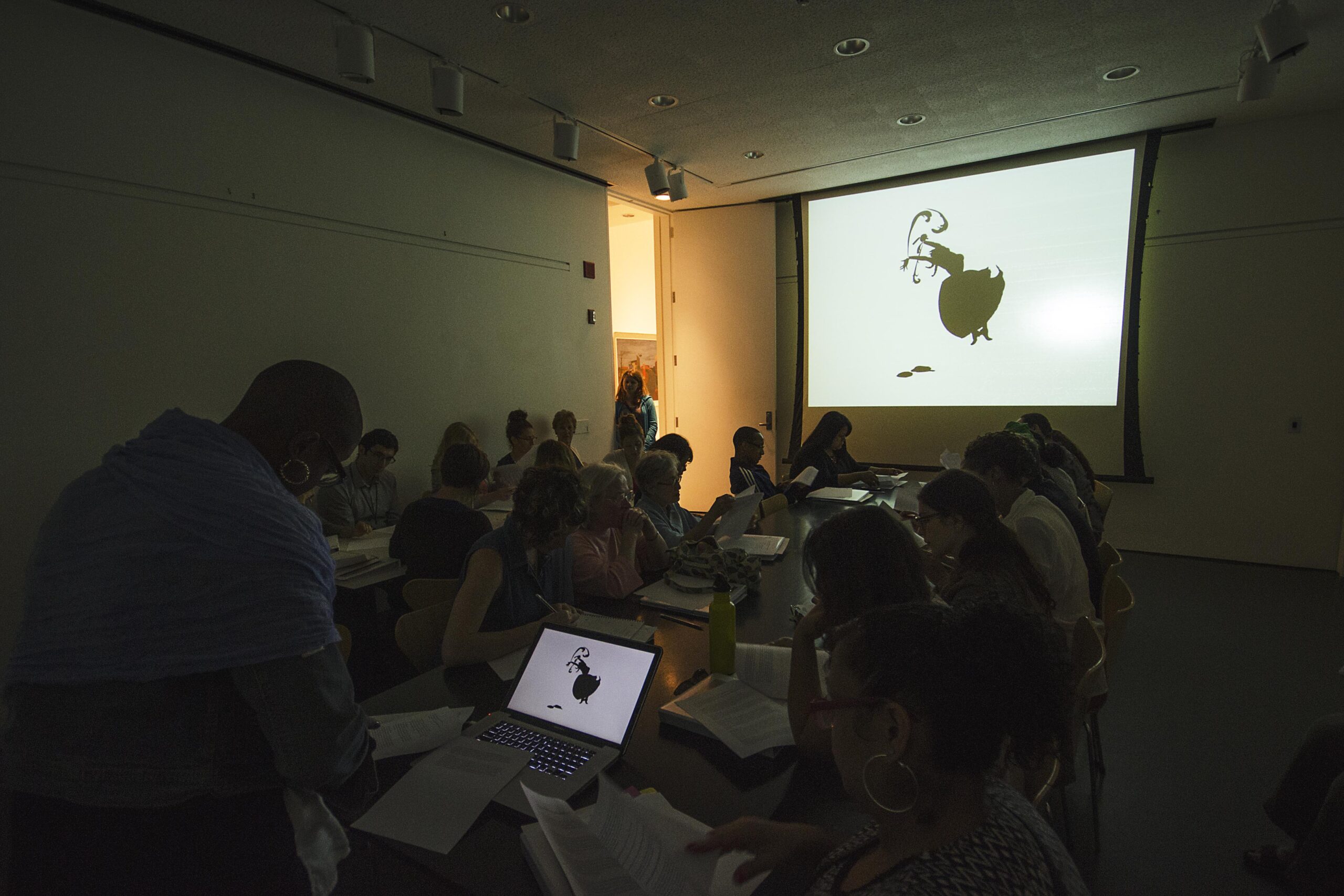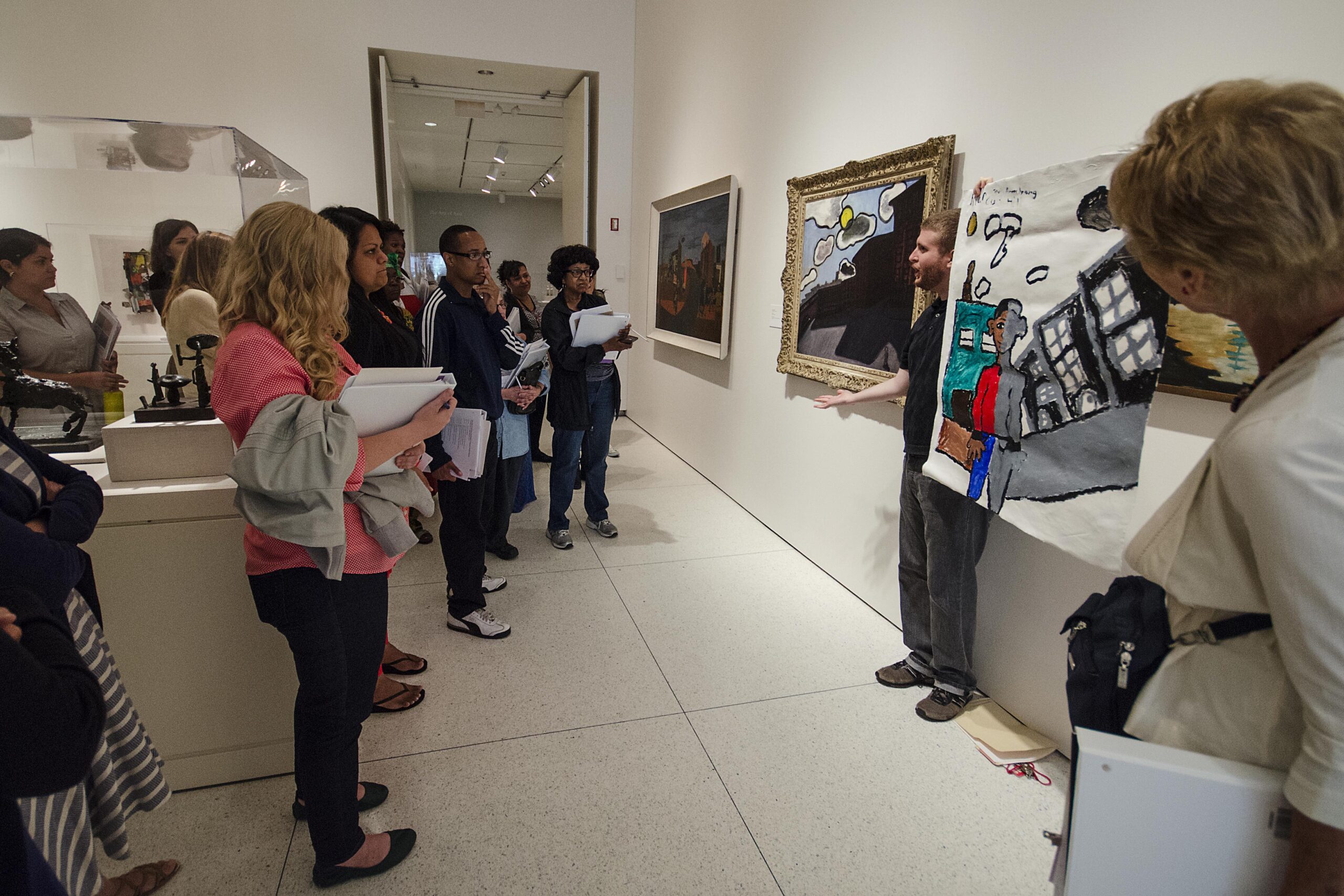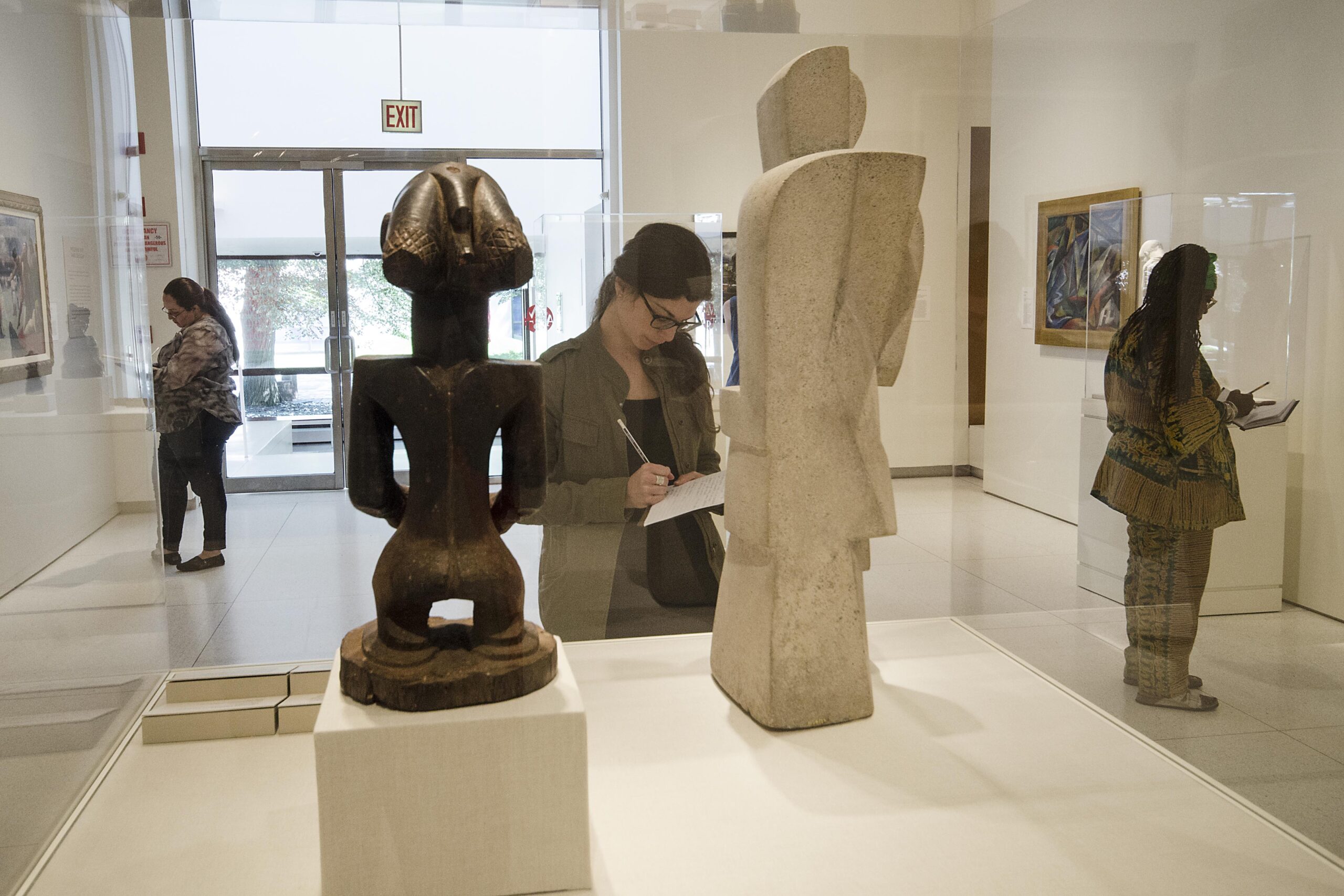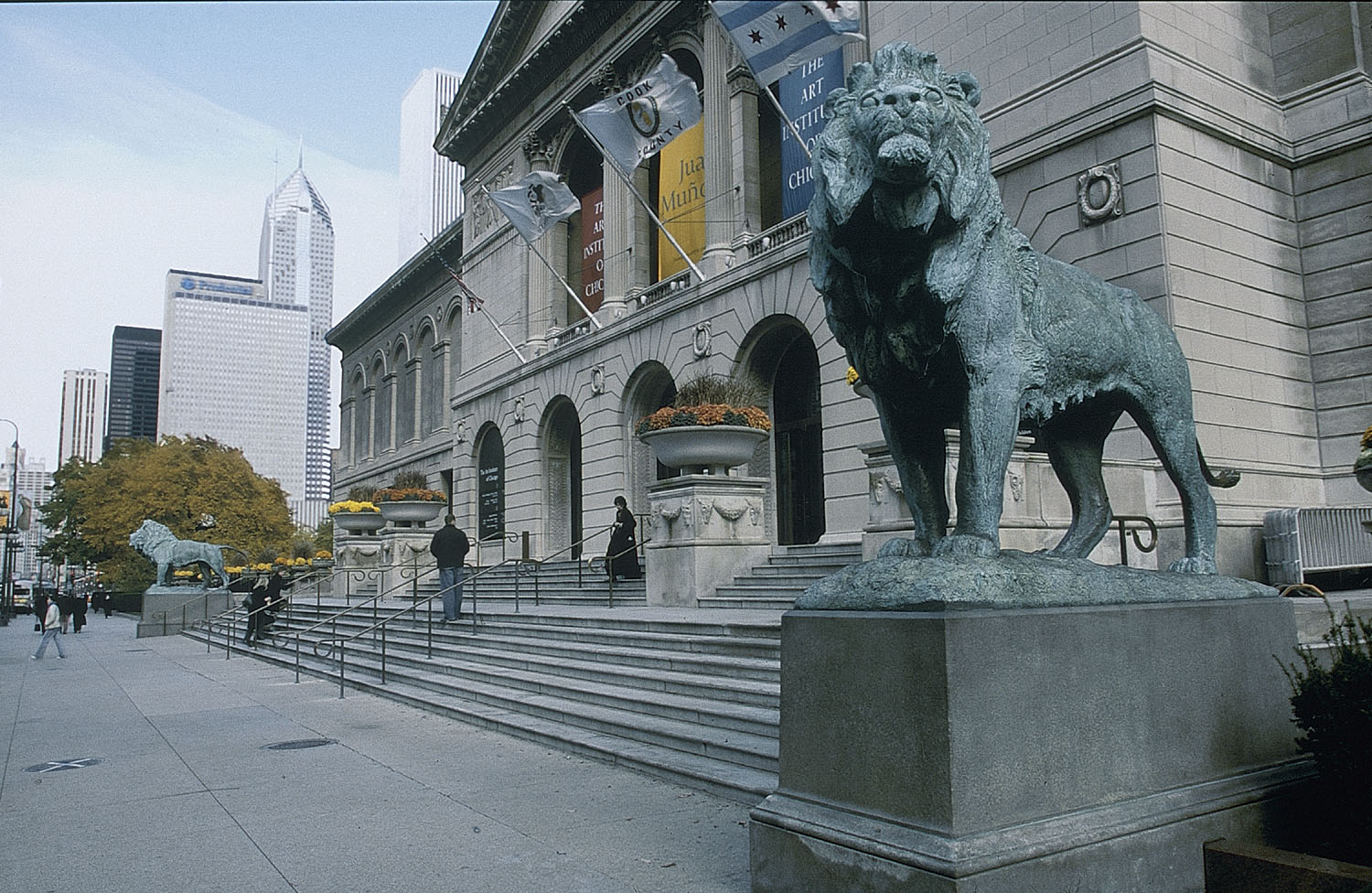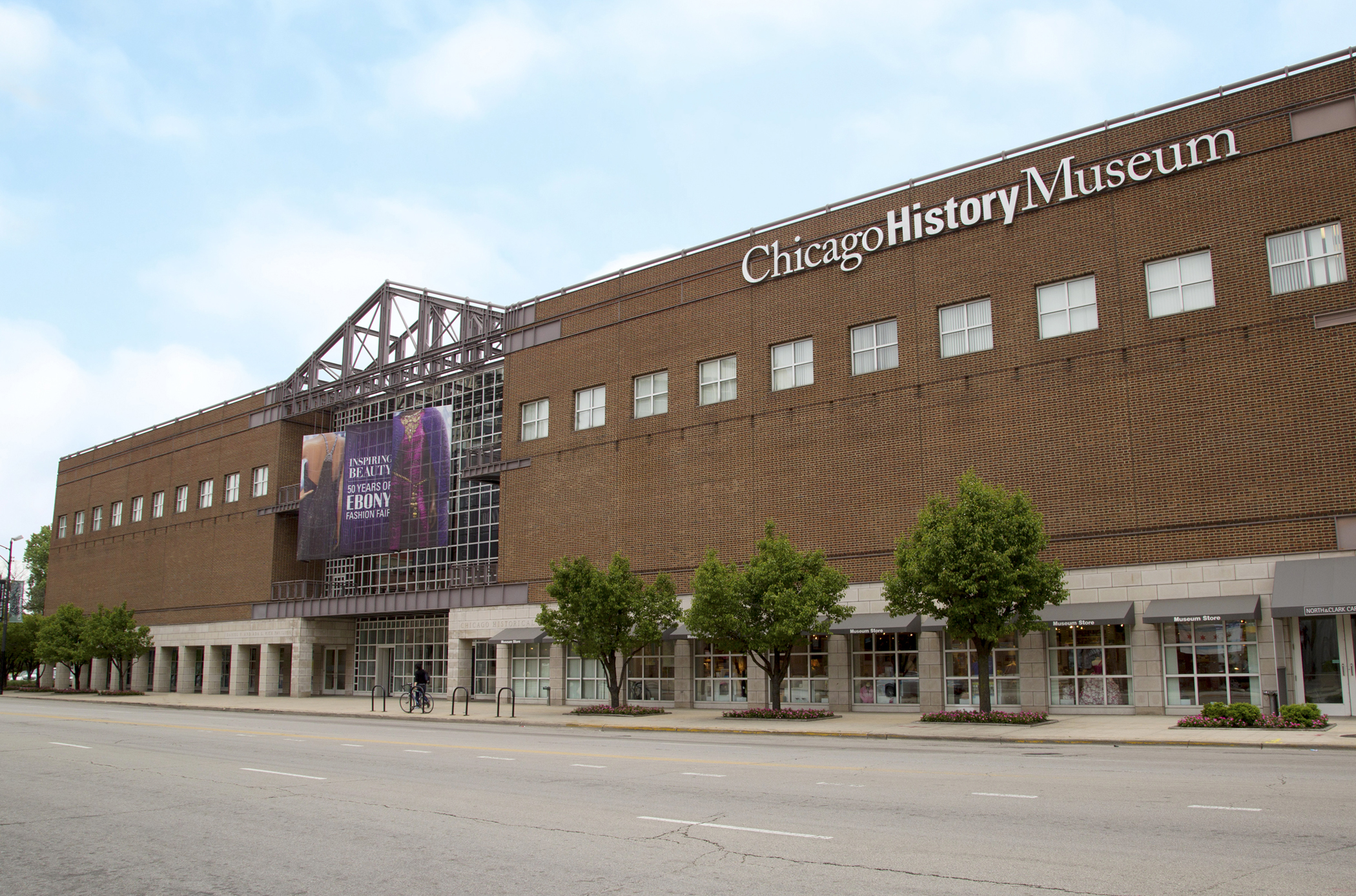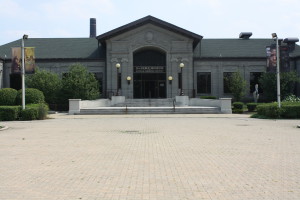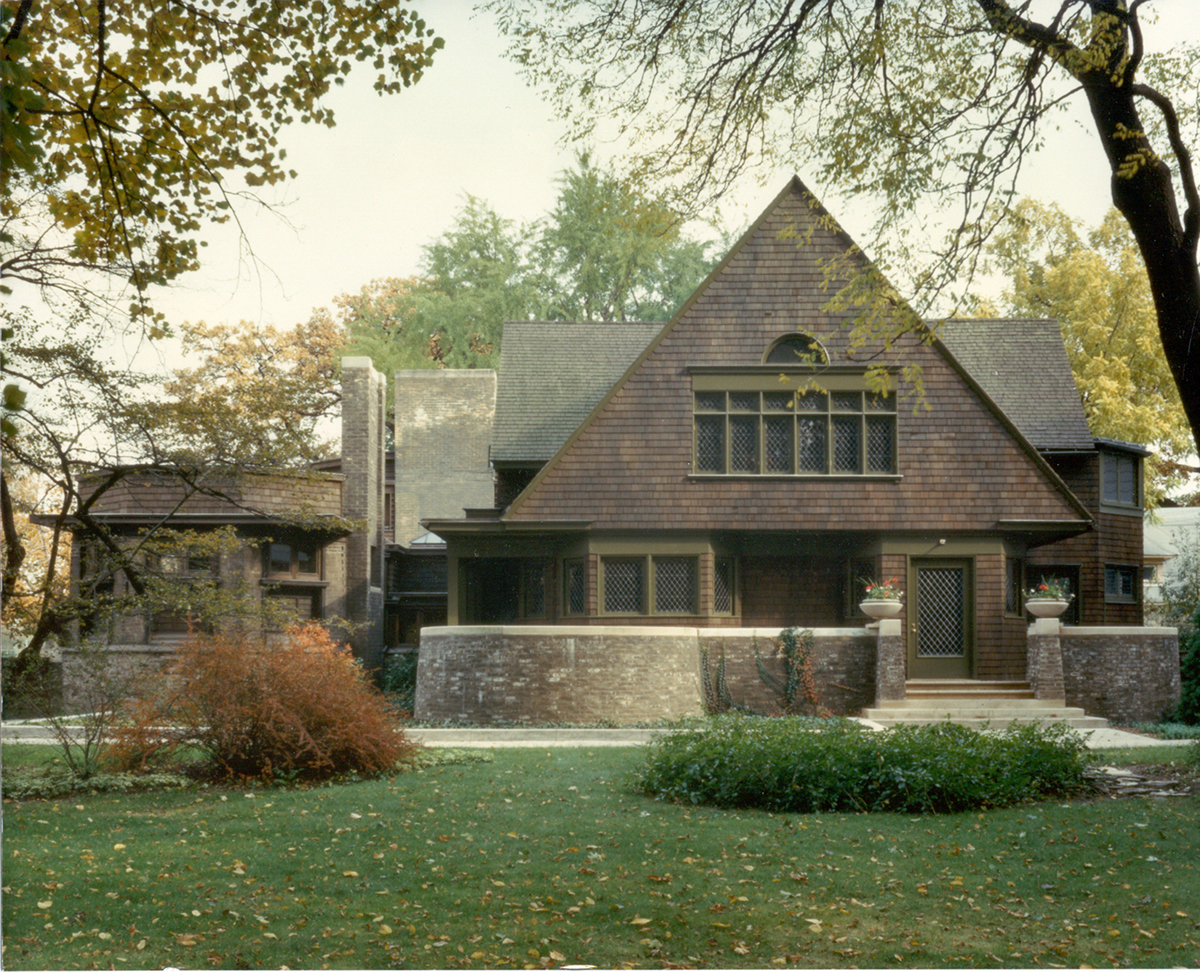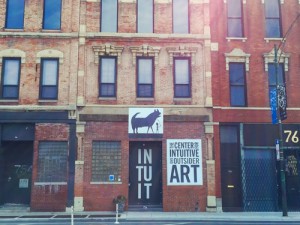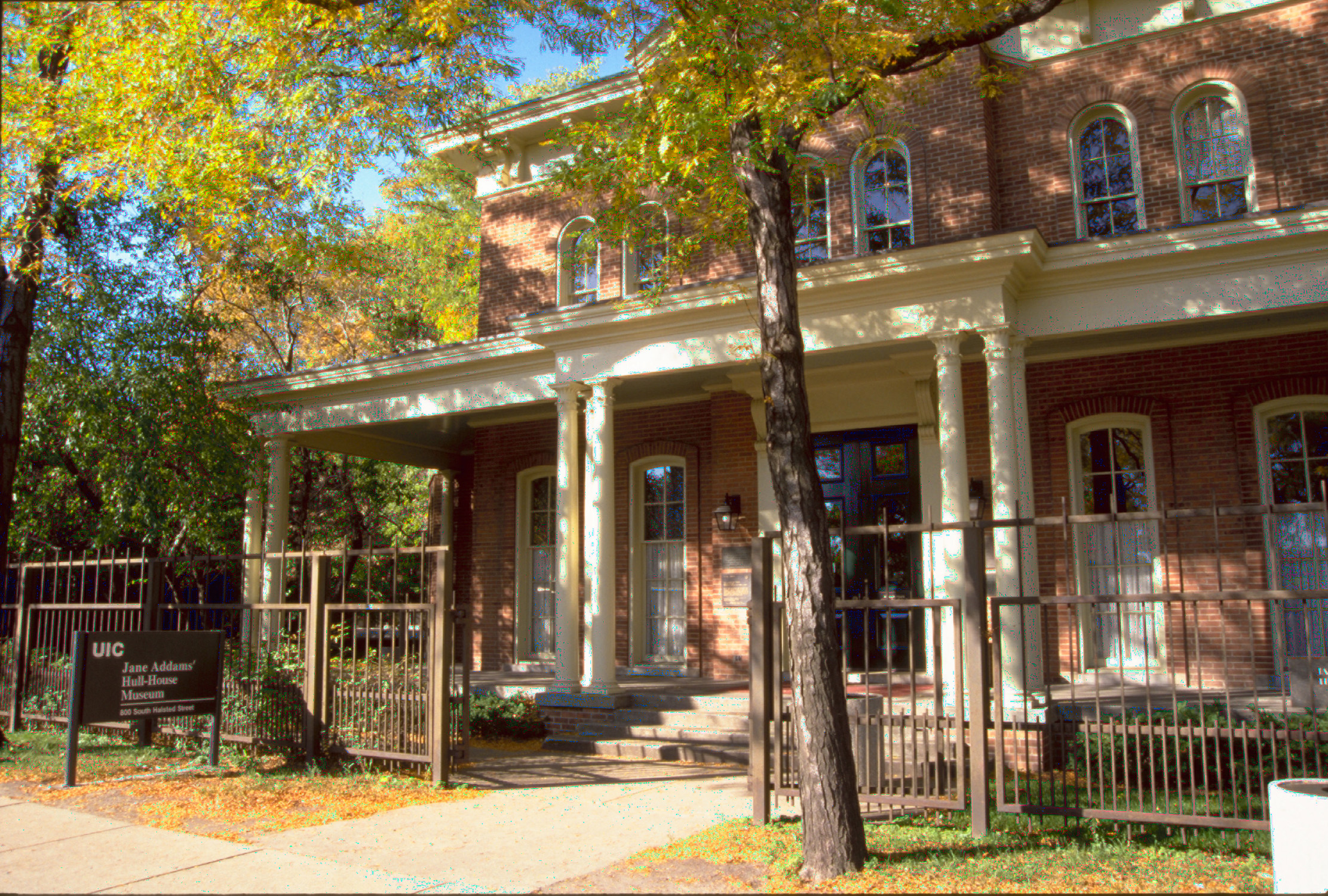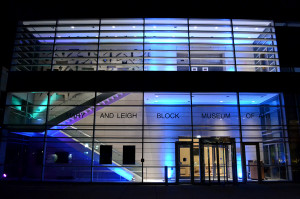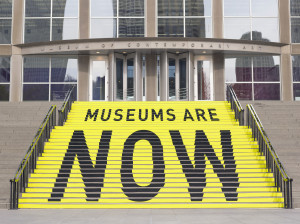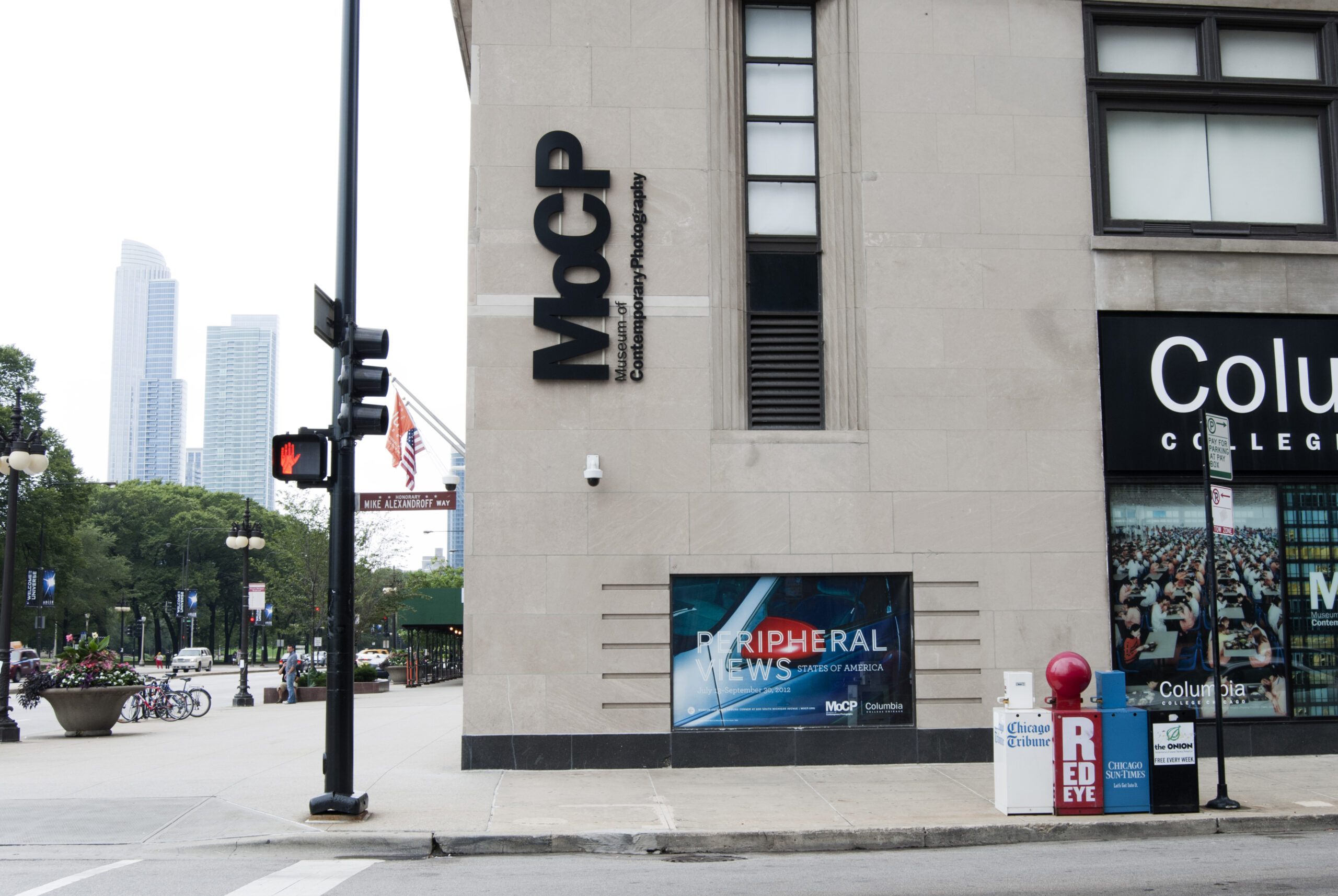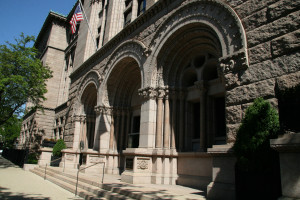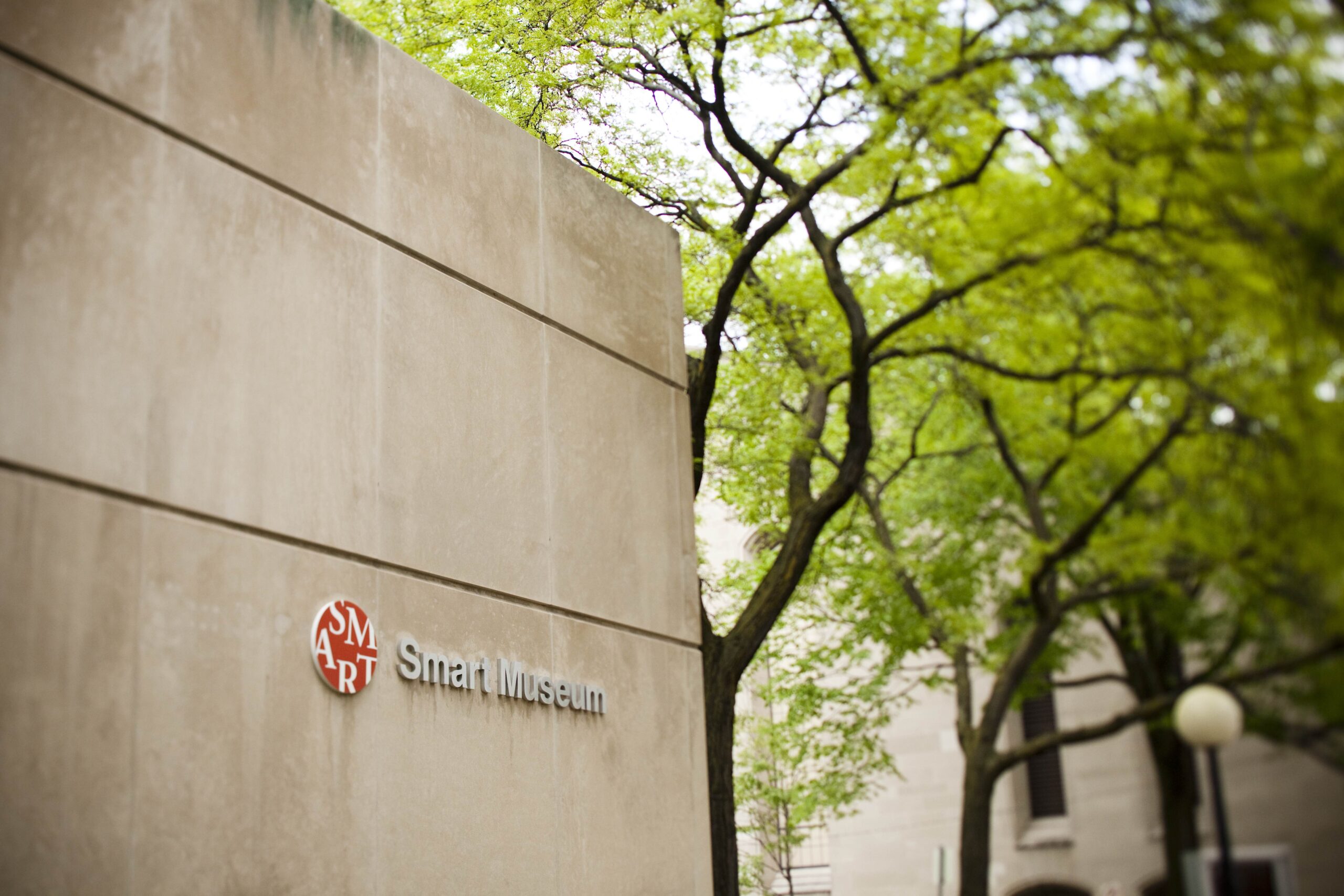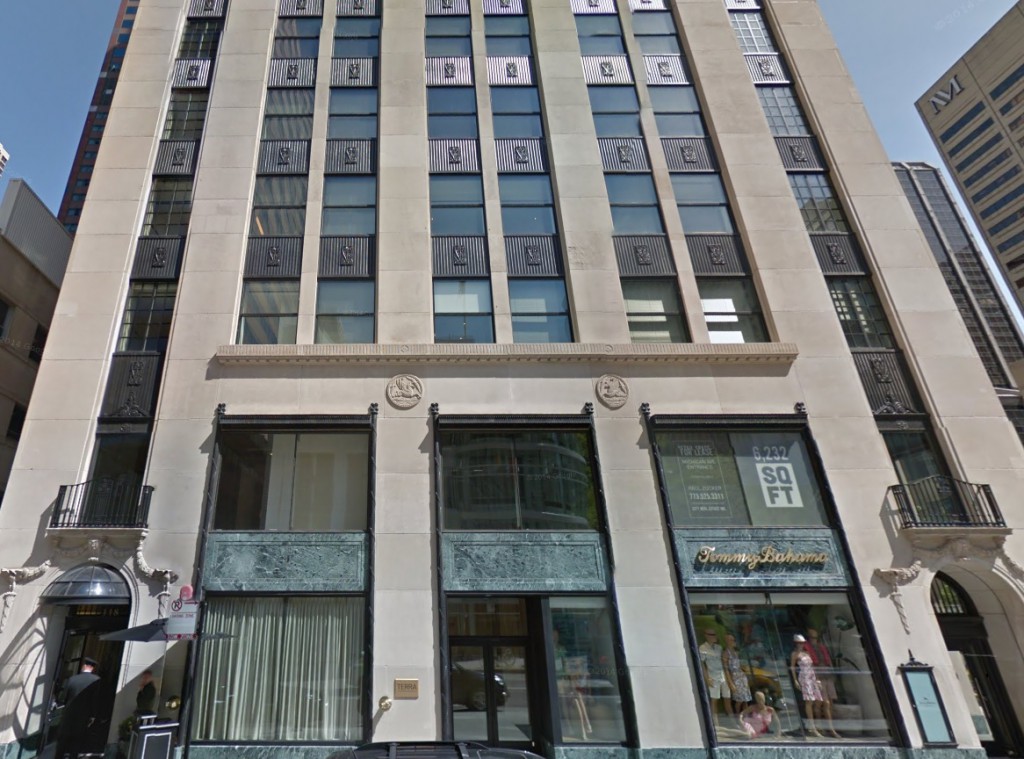1852 W. 19th St., Chicago, IL 60608
www.nationalmuseumofmexicanart.org
Participating Staff
- Kristin Enright
- Ricardo Serment
- Alicia Serrano
- Nancy Villafranca-Guzman
Project: An Immigrant’s Perspective
This teacher curriculum-development and student field trip program was designed for 6th-12th grade teachers of English language arts, Spanish, and social studies. The curriculum An Immigrant’s Perspective utilizes artwork from the National Museum of Mexican Art’s permanent collection and texts about the immigrant experience to broaden student understanding of U.S. history by providing the alternative points of view through diverse Mexican immigrant experiences of courage, struggle, and survival. Students approach these histories through the lens of the artwork and biographies of Mexican-American artists Luis Jiménez and Carlos Cortéz, thereby increasing their visual analysis skills, and their understanding of printmaking as an art form and its significance in Mexican American culture. During curriculum piloting in 2013, students whose teachers participated in curriculum planning visited the museum for a field trip, where they learned about the artwork and artists firsthand.
Key learning objectives
Student learning objectives:
- Understand the history of Mexican immigration to the United States with an emphasis on personal stories in order to humanize a frequently overlooked population, while also learning how to interpret immigration statistics such as census data.
- Learn about historic and current-day United States public policy toward Mexican immigrants.
- Gain writing, close reading, and speaking and listening skills, which align with Common Core State Standards.
- Learn how to conduct a close read of an artwork.
- Learn about printmaking and its significance in Mexican American culture through the life and work of artists Luis Jiménez and Carlos Cortéz.
CCSS connections
CCSS.ELA-Literacy.CCRA.R.1 Read closely to determine what the text/work of art says explicitly and to make logical inferences from it; cite specific textual/visual evidence when writing or speaking to support conclusions drawn from the text/work of art.
http://www.corestandards.org/ELA-Literacy/CCRA/R/1/
CCSS.ELA-Literacy.CCRA.R.3 Analyze how and why different elements interact in a text/work of art.
http://www.corestandards.org/ELA-Literacy/CCRA/R/3/
CCSS.ELA-Literacy.CCRA.R.7 Integrate and evaluate content presented in diverse media and formats, including visually and quantitatively, as well as in words.
http://www.corestandards.org/ELA-Literacy/CCRA/R/7/
How the program addresses the standards:
There is a strong need for bilingual curriculum materials about art and culture. Many students who attended this program had never been to an art museum.
Quotes from participants
- “Muchas gracias a ti y a tu equipo por habernos dado la oportunidad de exponer a nuestros estudiantes, especialmente mis estudiantes de ESL que nunca habían tenido la oportunidad de conocer algo sobre arte y de visitar a un museo.” —Olga E. (teacher) [Translation: “Many thanks to you and your team for giving us the opportunity to expose our students, especially my ESL students who had never had the opportunity to learn something about art or visit a museum.”]
- “I was impressed with my students. Many were right on point.” —Gregg C. (teacher)
Sample materials
Download sample materials from this program here.
Project: Summer Teacher Institute
The DuSable Museum of African American History, Jane Addams Hull-House Museum, National Museum of Mexican Art, and Smart Museum of Art co-host an annual Summer Teacher Institute that fuses American art, the Common Core State Standards (CCSS), and the vision of museums, educators, and students as agents for social change. The program launched in 2013 as an outcome of the Terra Foundation’s American Art at the Core of Learning program.
The July 2014 Summer Teacher Institute, Activating Art for Peace and Justice, was a five-day intensive experience exploring American art at the crossroads of peace and justice. American artists are known for creating work which supports consciousness-raising, movement-building, and enacting social change. During the Institute, teachers, museum professionals, and guest presenters gathered to develop methods to guide students in examining historical art to uncover the systems that construct individual and cultural identities, while cultivating insights and inspiration for peacemaking and social justice.
The Summer Teacher Institute engaged teachers with museum collections from each participating organization and introduced best practices in art education including Visual Thinking Strategies (VTS) and facilitated dialogue. Armed with tools for critical visual literacy, educators developed arts-integrated curricula exploring themes of peace and justice to take back to their classrooms. In addition, participating teachers scheduled field trips to bring their classes to one or more of the participating cultural organizations.
Program website: http://www.hullhousemuseum.org/summer-teacher-institute/
Key learning objectives
- Teachers will learn about resources from the Jane Addams Hull House Museum, Smart Museum, National Museum of Mexican Art, and the DuSable Museum.
- Teachers will increase knowledge About American art that examines and reflects social change and democratic ideals from the late 19th century.
- Teachers will learn art interpretation strategies to discuss issues of peace and justice.
CCSS connections
Key Ideas and Details:
CCSS.ELA-LITERACY.CCRA.R.1
Read closely to determine what the text says explicitly and to make logical inferences from it; cite specific textual evidence when writing or speaking to support conclusions drawn from the text.
CCSS.ELA-LITERACY.CCRA.R.2
Determine central ideas or themes of a text and analyze their development; summarize the key supporting details and ideas.
CCSS.ELA-LITERACY.CCRA.R.3
Analyze how and why individuals, events, or ideas develop and interact over the course of a text.
Integration of Knowledge and Ideas:
CCSS.ELA-LITERACY.CCRA.R.7
Integrate and evaluate content presented in diverse media and formats, including visually and quantitatively, as well as in words.
CCSS.ELA-LITERACY.CCRA.R.9
Analyze how two or more texts address similar themes or topics in order to build knowledge or to compare the approaches the authors take.
What we learned
Activating Art for Peace and Justice employed a robust evaluation plan to understand the impact of the project. Ultimately our evaluation revealed that the STI was a positive, refreshing, engaging, and inspiring experience for teachers.
Many participants described Activating Art for Peace and Justice as an inspiring experience. The sources for this inspiration included the interactive activities, teaching strategies, sense of community within the cohort, and the overall fun and festive mood of Activating Art for Peace and Justice. Participants believe that this sense of inspiration will improve their teaching quality and that it will last throughout the school year.
The Smart Museum and the other facilitating organizations received helpful feedback from STI participants that directly impacted the 2015 iteration of the Summer Teacher Institute. Participants requested more time to engage with art and model techniques in the galleries as well as extended time for touring and becoming familiar with the museum collections.
Quotes from participants
- “I feel like the whole week has provided me with enough ideas/inspiration/strategies to fill a whole year. These will all be integrated into my curriculum for years to come, from the VTS/facilitated dialogue to the different icebreakers (i.e. value line, privilege line, root cause tree, etc.) i am so inspired and excited.”
- “THANK YOU! PLEASE OFFER MORE PROGRAMS LIKE THIS IN THE FUTURE! It is so very rare to have the opportunity to work with like-minded, positive individuals as we share our ideas about social justice issues, lesson plans, challenges, art inspiration… We need more positive, action-minded opportunities like this.”
- “I know that by attending this seminar my teaching of the visual art program at my school will increase in quality 100%!”
- “The best part about this was that it was longer term than most other professional development opportunities and we got to discuss and collaborate with other passionate teachers. Everyone (participants and facilitator) is so positive. Wish I could work with these individuals all the time.”
- “The instructor and staff’s knowledge made me feel comfortable with the material myself. It also inspired me to push myself out of my regular teaching habits because their knowledge gave me so many new ideas about implementation of thinking strategies.”
- “I have learned a great deal about how to facilitate discussions around some topics that may seem intimidating at first, especially at the elementary level. I feel like I have a good grasp of how to get my students to participate in conversations that revolve around issues that they deal with or maybe push them to think critically about social justice issues/justice/peace in ways that they don’t get to in other classrooms.”
- “I learned new strategies for questioning and got very comfortable with them. I feel very motivated to use open-ended questioning and visuals to explore these social justice issues–No wrong answers :)”
- “I’ve learned so much about how to weave together social justice issues with my art curriculum in elementary school. Having the opportunity to do this with educators from across the city/across grade levels/across subject area has also inspired me to look at art with fresh eyes and think of new ways to introduce and discuss familiar themes.”
Sample materials
Download sample materials provided to teachers in this program here.
Download a sample lesson from this program here.
Watch a video about the program here.

